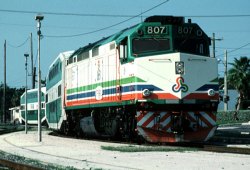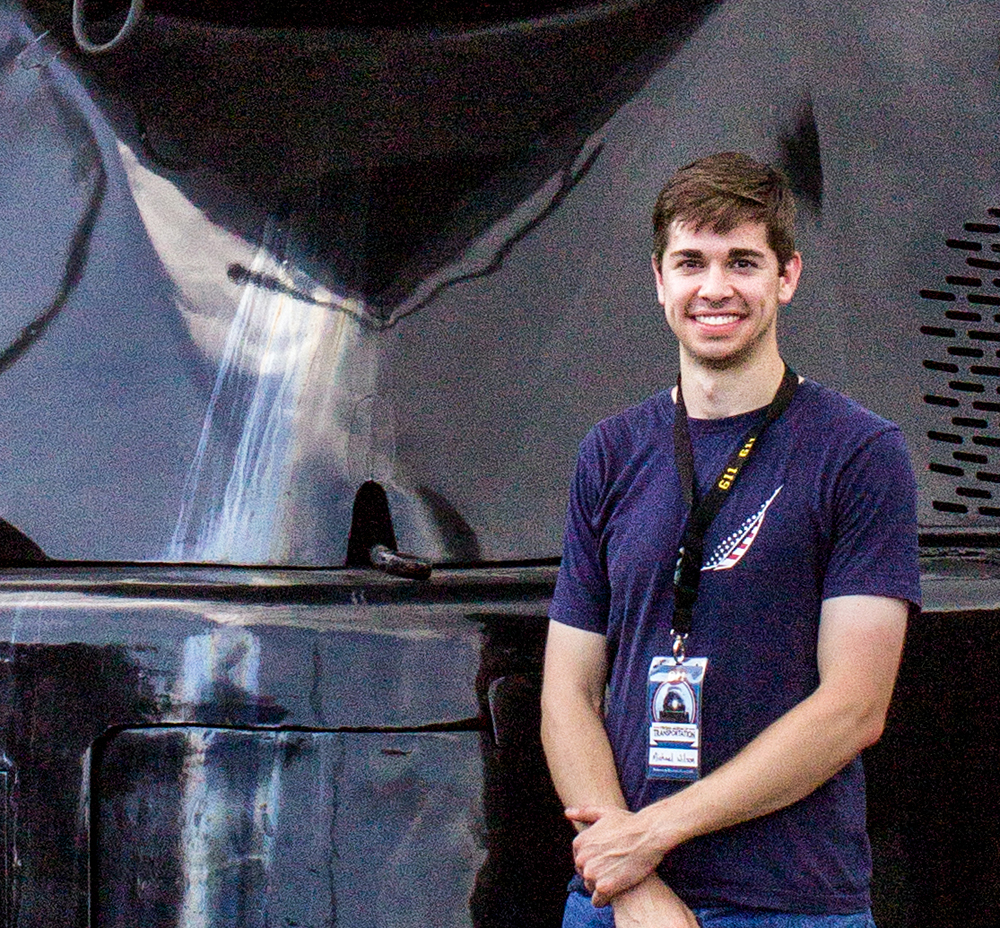Formed in 1987 by the Florida Department of Transportation to provide temporary commuter rail service while construction crews widened Interstate 95 and the parallel Florida Turnpike, Tri-Rail outlasted its temporary status, adding more trains and stations in the process.
The initial 67-mile route was extended north to Magnonia Park in 1996, and from Hialeah Market south to a new Miami Airport station in 1998.
Tri-Rail, short for the Tri-County Commuter Rail Authority, serves 18 stations on a 72-mile line that links West Palm Beach and Miami. Florida DOT owns the former Seaboard Air Line trackage, with operations provided by Herzog Transit Services, Inc., and dispatching by CSX Transportation. CSX freight trains and Amtrak’s New York-Florida trains also use the route.
By 2007, Tri-Rail expects to complete an 12-year, $334 million project to double-track its entire 72-mile corridor. All but one phase of the project has been completed, and on March 27, 2006, Tri-Rail increased frequencies, operating on 20-minute headways during rush hours (before trains ran one hour apart) and offering more frequent weekend service. Travel times from end to end were also cut by 9 minutes, reduced to 1 hour, 50 minutes of running time. The final portion of the project is a new, double-track bridge crossing the New River in Fort Lauderdale; the $53 million bridge supplements an existing single-track lift bridge that freights will continue to use.
In 2006, Tri-Rail became the first commuter railroad to place in service a new generation of commuter-rail DMUs: diesel multiple unit cars built to commuter rail (non-transit) specifications. The double-deck DMU cars were built by Colorado Railcar and supplement Tri-Rail’s locomotive-hauled, 3-car trainsets.
Motive power for the locomotive-hauled trains consists of F40PHL-2s and F40PH-2Cs from Morrison-Knudsen and MK successor Boise Locomotive Company, along with two F40PHRs (former Amtrak units remanufactured by Boise Locomotive), and six GP49H-3s, originally GP39X test models built in 1980 for Southern Railway that were upgraded and reclassified GP49s by Norfolk Southern; Mid-America Car converted the units to commuter locomotives. Tri-Rail’s original fleet of bilevel coaches came from the Urban Transit Development Corp., matching the specifications of cars used by GO Transit. They were later supplemented by a new group of cab cars from Bombardier, tacked onto an order placed by L.A. commuter-hauler Metrolink.
Trains operate daily between Magnonia Park and the Miami Airport station.
Free shuttle buses feed into many of the stations, including connections to Miami International Airport, and the Fort Lauderdale/Hollywood Airport. A station serving Palm Beach International Airport was closed by Florida DOT in October 1999 to make room for new highway access ramps to 1-95. Shuttle buses now serve the Palm Beach airport from the joint Tri-Rail/Amtrak West Palm Beach station.
At the Metrorail Transfer station, Tri-Rail passengers can reach downtown Miami by boarding the Metrorail rapid transit system.
800 NW 33rd Street, Suite 100
Pompano Beach, FL 33064
(800) TRI-RAIL (874-7245), and (305) 836-0986
www.tri-rail.com














